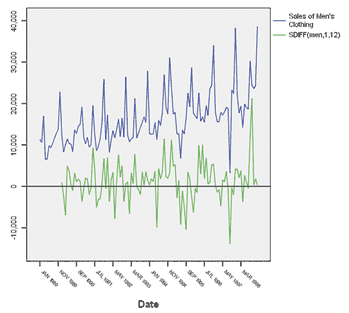IBM SPSS Forecasting
- Overview
- Features and Benefits
IBM® SPSS® Forecasting enables analysts to predict trends and develop forecasts quickly and easily -- without being an expert statistician.
Reliable forecasts can have a major impact on your organization’s ability to develop and implement successful strategies. Unlike spreadsheet programs, IBM SPSS Forecasting has the advanced statistical techniques needed to work with time-series data regardless of your level of expertise.
- Analyze historical data and predict trends faster, and deliver information in ways that your organization’s decision makers can understand and use
- Automatically determine the best-fitting ARIMA or exponential smoothing model to analyze your historic data
- Model hundreds of different time series at once, rather than having to run the procedure for one variable at a time
- Save models to a central file so that forecasts can be updated when data changes, without having to re-set parameters or re-estimate models
- Write scripts so that models can be updated with new data automatically
IBM SPSS Forecasting offers a number of capabilities that enable both novice and experienced users to quickly develop reliable forecasts using time-series data. It is a fully integrated module of IBM SPSS Statistics, giving you all of IBM SPSS Statistics’ capabilities plus features specifically designed to support forecasting.
New to Building Models from Time-series Data?
IBM SPSS Forecasting helps you by:
- Generating reliable models, even if you’re not sure how to choose exponential smoothing parameters or ARIMA orders, or how to achieve stationarity
- Automatically testing your data for seasonality, intermittency and missing values, and selecting appropriate models
- Detecting outliers and preventing them from influencing parameter estimates
- Generating graphs showing confidence intervals and the model’s goodness of fit
You’re an Experienced IBM SPSS Statistics User?
IBM SPSS Forecasting allows you to:
- Control every parameter when building your data model
- Use IBM SPSS Forecasting Expert Modeler recommendations as a starting point or to check your work
Procedures and Statistics for Analyzing Time-series Data
Using IBM SPSS Forecasting with IBM SPSS Statistics Base gives you a selection of statistical techniques for analyzing time-series data and developing reliable forecasts.
Techniques Tailored to Time-series Analysis
IBM SPSS Statistics has the procedures you need to realize the most benefit from your time-series analysis. It generates statistics and normal probability plots so that you can easily judge model fit. You can even limit output to see only the worst-fitting models -- those that require further examination. Automatically generated high-resolution charts enhance your output.
Procedures available in IBM SPSS Forecasting include:
- TSMODEL - Use the Expert Modeler to model a set of time-series variables, using either ARIMA or exponential smoothing techniques
- TSAPPLY - Apply saved models to new or updated data
- SEASON - Estimate multiplicative or additive seasonal factors for periodic time series
- SPECTRA - Decompose a time series into its harmonic components, which are sets of regular periodic functions at different wavelengths or periods

